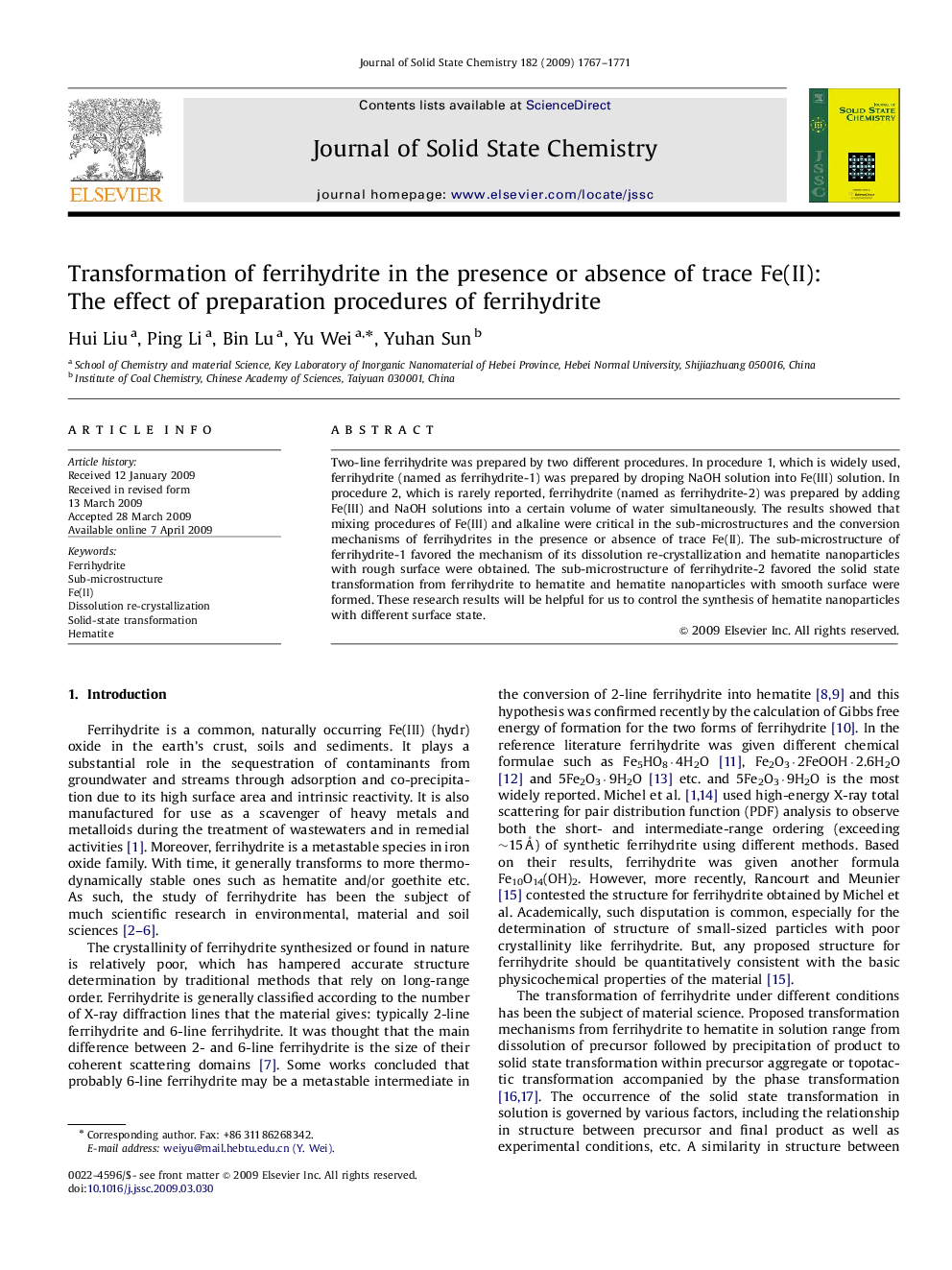| Article ID | Journal | Published Year | Pages | File Type |
|---|---|---|---|---|
| 1329245 | Journal of Solid State Chemistry | 2009 | 5 Pages |
Two-line ferrihydrite was prepared by two different procedures. In procedure 1, which is widely used, ferrihydrite (named as ferrihydrite-1) was prepared by droping NaOH solution into Fe(III) solution. In procedure 2, which is rarely reported, ferrihydrite (named as ferrihydrite-2) was prepared by adding Fe(III) and NaOH solutions into a certain volume of water simultaneously. The results showed that mixing procedures of Fe(III) and alkaline were critical in the sub-microstructures and the conversion mechanisms of ferrihydrites in the presence or absence of trace Fe(II). The sub-microstructure of ferrihydrite-1 favored the mechanism of its dissolution re-crystallization and hematite nanoparticles with rough surface were obtained. The sub-microstructure of ferrihydrite-2 favored the solid state transformation from ferrihydrite to hematite and hematite nanoparticles with smooth surface were formed. These research results will be helpful for us to control the synthesis of hematite nanoparticles with different surface state.
Graphical abstractFerrihydrites prepared by mixing Fe3+ and NaOH solutions according to different procedures can rapidly transform into hematite particles with different surface structures in the presence of trace Fe(II).Figure optionsDownload full-size imageDownload as PowerPoint slide
